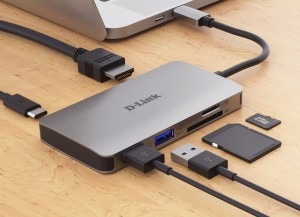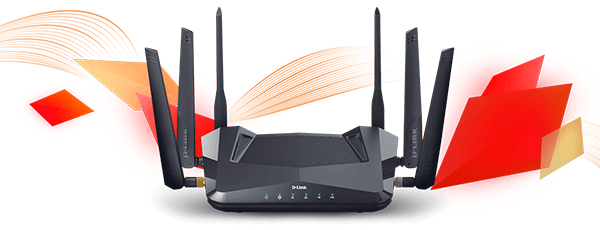
Our Ultimate Guide to Working From Home
Way back in March 2020, we were all instructed to work from home, if we could. Leading to millions of us grabbing our laptops and headed home, with plans of working from the sofa, garden or that upstairs office you never use. But, as the months rolled on, the reality of the situation has well and truly set in.
Time to make further upgrades to ensure a better home working office environment?
And now in February 2021, with the recent Government announcement of the ‘roadmap’ back to society being closer to what we had before the outbreak, the idea of working from hope is something many businesses are now finding to be a viable alternative to having all their staff in the office every day of the week.
Plan your remote working setup
First things first – let’s establish a plan! What is the end goal? More connectivity, faster speeds and better capacity are all possible, but there are a few things to consider before we dive in
Your Environment
Mansion, house, flat or garden, where you plan to work will have an impact on what equipment you need
How often will you be working at home?
Are you at home every day or just 1 day a week?
Bandwidth requirements
Are you hungry for bandwidth? video conference calls or Upload/download images and videos
Wired or Wireless
Can you cable up devices or is it mostly going to be wireless connectivity?
Level of security
If you work with personal data or financial details, for instance, you will need to consider a higher level of security
Basic / Infrequent / Low internet user home worker
If you work from home infrequently, or your network requirements amount to checking emails, file downloads/uploads and the occasional video conference meeting, then a basic set up is all you require. Let’s go through logistics of a basic home office set up As the streamlining of most modern laptops continues, the added portability often has a negative impact on connectivity, sacrificing Ethernet ports, HDMI and USB ports. As most offices will have a docking station, this only becomes an issue at home. A USB hub at home will allow you to connect all your devices, charge your phone and use a monitor.
What is a Hub?
A Hub will add extra ports to your device, usually, they will be USB-A or USB-C. Hubs are typically powered by the laptop, and their lightweight portability allows them to fit into your pocket. USB hubs are plug and play meaning they can just be plugged into your device and they are ready to go and can be used on other devices such as games consoles.
Hubs will come with a range of options on size and features from 3in1 to 8in 1’s our range should tick all the required boxes for use in a home office.
Router
When it comes to the internet, the router is the king – the gateway to all the rest of your networking solution. So if you are still using the router your ISP provided, you could be limiting your network wireless speeds, security and reliability.
So what makes a good router?
Wireless Speed
Wi-Fi 5 or Wireless AC, is the current standard technology in the market and AC routers come in a variety of speeds, from AC750 – AC6000 for example, but a router advertised as AC1200 doesn’t mean you’re getting a top speed of 1,200Mbps. This number is a combination of speeds from both bands. For example, an AC1200 router is going to have a 2.4GHz band with a top speed of 300Mbps and a 5GHz band with a top speed of 867Mbps.
Coverage Area
If you have a larger area to cover, a router with more Antenna’s will provide a more powerful signal, because they are physically located different places on the device, they each receive a slightly different signal. This is called spatial diversity and it helps to improve link reliability. Once each antenna has received a signal, the router algorithmically combines the different versions to create one better version.
Routers feature set essentials:
Mu-Mimo
MU-MIMO stands for multi-user, multiple inputs, multiple outputs, which allows multiple devices to get a high bandwidth signal at the same time.
QoS (Quality of service)
QoS lets you tell your router which devices you would like it to prioritise so that specified devices like your laptop always has the best connection to the internet.
App-Based Management
Apps simplify the task of setting up and making adjustments to your WiFi network, monitor which devices are connected to your network and easy manage router updates.
Wi-Fi 6 – Next-generation speeds
Why do you need Wi-Fi 6?
Because your smart home is reaching the limits of its potential Prevailing Wi-Fi standards simply aren’t built to support “noisy” Wi-Fi environments with countless personal devices and smart home gadgets running simultaneously 24/7
Wi-Fi 6 brings next-generation Wi-Fi technology into your home, giving you the quantum leap in capacity, speed, and range you need to handle all your Wi-Fi demands Perfect for high-performance, highly device-dense smart homes
View our range of D-Link WiFi Routers
Why-Fi 6?
Faster
A new type of wireless that’s even faster. Bring home next-gen Wi-Fi 6 speeds of up to 1.5 Gbps. Experience a jump of up to 38% faster speeds than Wireless AC, for a better way to enjoy snappier browsing, 4K streaming and online gaming.
Greener
Green technology that saves your battery life. Target Wake Time (TWT) automatically helps reduce battery consumption for all your connected devices by devising when and how often transfers are required, TWT then automatically conserves energy and helps save battery life on your devices. With WiFi 6, you get up to 4X more device capacity than you do with WiFi 5, so you can connect and stream on all your devices without affecting speed or reliability
Higher capacity
With WiFi 6, you get up to 4X more device capacity than you do with WiFi 5, so you can connect and stream on all your devices without affecting speed or reliability.
I’ve bought all my stuff, how can I use the cool features?
As easy and plug and play as we have made the D-Link product range, to get the fullest out of your network, a few features will have to be set up in order to work. Here are a few of the most essential features that D-Link products come with that will optimise your network speed
Quality of Service is a tool that will instruct your router how to prioritise the bandwidth on your network, so you can improve the performance of critical network traffic
Make sure that your devices are prioritised, so you can hit your deadlines over someone streaming Netflix!
VPN
A VPN or Virtual Private Network is a means used to encrypt your data and protect your identity, by adding a layer of privacy. You can use it to access the office server from a remote location, establishing a secure connection, allowing you access to all your secure data, images or important documents. The next time you work in a coffee shop or hop onto a public Wi-Fi connection, just pause to think about who else could be on it.
DDNS
A common example used to explain what DNS is a comparison to the phonebook. We use domain names, web browsers use IP addresses and the DNS is what translates from Domain – IP so browsers can load the page Having a home IP address is not as simple as a business IP address. When you become a customer of an ISP, they provide you with an IP address so you can access the internet. However, the ISP changes these dynamic IP addresses frequently. This makes it difficult to utilise your residential IP address with other services (webcam, security camera, thermostat, etc.) Thankfully, Dynamic DNS can help by assigning a custom domain name to your home IP address that will update automatically as your home IP continues to change. This solves the problem of ever-changing residential IP addresses by associating your address with a consistent domain name without the need to buy a pricey static IP.
Full time at home? Big bandwidth guzzler? A full house of people?
There’s a number of reasons that a homeworker could live with the more basic set-up, but it’s not optimal. Working with kids at home, competing for bandwidth with another home worker or streaming service or a large house can all have an effect. Having a separate 4G network can help solve this issue.
4G
4G is a potential solution for any worker sharing a network or requires an added layer of security. If you work with peoples data, it’s probably safer to use a separate network than share with your kids on TikTok. Whether you use the 4g network yourself or set it up to keep the children separate is up to you. Our 4g products include built-in dual-active firewalls (SPI and NAT) and the latest WPA/WPA2 wireless encryption helps keep your wireless network secure and your traffic safe. 4G also can have advantages over fixed-line, particularly in rural areas where speeds are low, its also an instant set up – plugin a sim and go.
4G failover
Our routers are designed with a constant internet connection in mind. You can create failover connectivity if either your fixed line or mobile broadband fails The router will instantly switch to the backup mobile internet when you need it most, allowing you to stay connected and enjoy the internet without interruptions so you can maintain your productivity
Router or hotspot?
D-Links 4G routers are designed to remain mostly stationary whereas, a 4G Mobile Hotspots are smaller and lighter, designed to be easily transported and to provide internet access on the go. The router option needs an external power supply, whereas a hotspot will have a long-lasting battery, perfect for on the go. Create your own 4G hotspot anywhere with the D-Link DWR-933 4G/LTE Cat 6 Wi-Fi Hotspot.
Business Grade Networking at Home
The need for business networking solutions at home is now and will grow, If you’re in HR, you have the personnel details on your laptop, in marketing, you’ll have databases of external clients, financial records, all of these are needed for your jobs, but can’t fall into the wrong hands. Business-grade solutions will supply you extra reliability and security, so you can be safe in the knowledge that the data on your laptop is safe.
Access Points
Extend the wireless across your house and or garden with our extensive range of Business Wireless Access Points, manage these with our simple Nuclias connect software, either or laptop or on the go on your phone!
Customisable network management that you control locally.
Nuclias Connect is network management software for businesses with privacy and security as critical requirements. It can be used either as an on-premises software management platform or as a cloud solution hosted on a public cloud service. It also enables you to fully customise your network and can be used to upgrade existing infrastructure as it’s backwards compatible with selected D-Link APs*. It fulfils privacy and security requirements thanks to on-site internal hosting, with user data never leaving your possession.
Enterprise grade security
All Nuclias Ap’s support Personal and Enterprise versions of WPA3 Wi-Fi encryption, with support for a back-end RADIUS server, to help maintain network security. It also features MAC address filtering, wireless LAN segmentation, SSID broadcast disabling, and wireless broadcast scheduling to enhance security. It also supports up to 16 virtual access points to help segment users on the network using multiple SSIDs. And it features wireless client isolation, which allows limitations to be placed on direct client-to-client communication.


